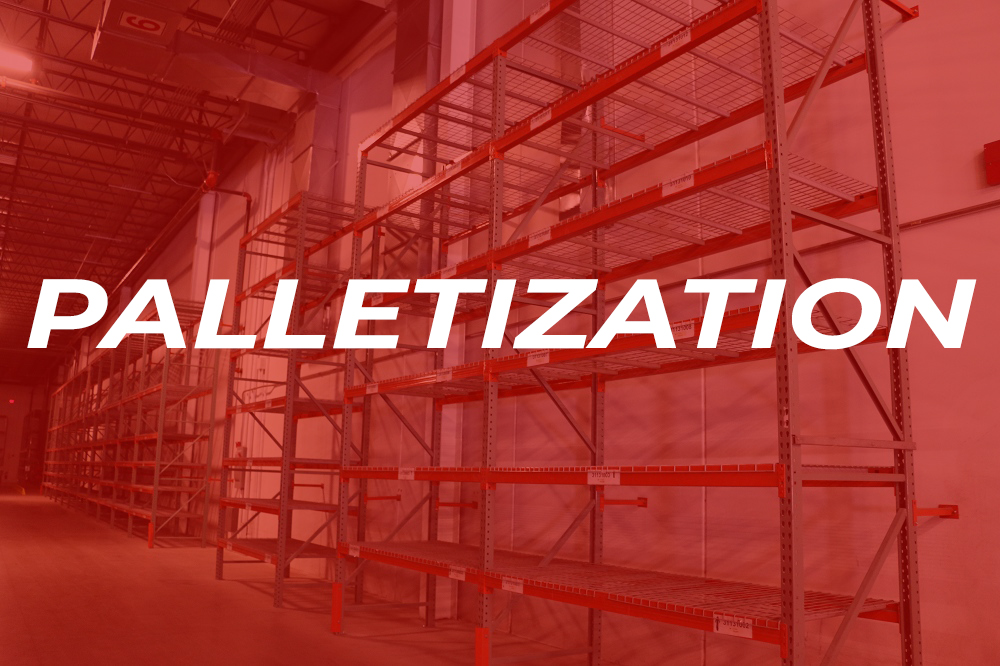-
Home
-
Methods of Palletization

Methods of Palletization
December 9, 2013
Palletization is the process of taking cases of product and packing them together in one unit on a pallet for storage or transportation. There are three categories for palletizing products: manual, semi-automatic, and automatic. Each has a fitting application and it all depends on how many pallets of what type of equipment are you transporting.
Manual palletization is the most widely used and just involves workers manually taking cases and stacking them on to pallets. The products can be stacked into vertical columns or staggered like bricks for added stability. The pallet is then manually stretch wrapped, meaning someone with a roll of film must walk around the pallet until it is completely wrapped. This is very time consuming but is probably the most viable option for smaller operations or tight budget situations.
Semi-automatic palletizing typically involves multiple pieces of material handling equipment, including a conveyor, lift table, and stretch wrapper. The conveyor is used to move cases to the lift table where the operator stacks the cases onto a pallet. Once the palletized load is assembled, the lift table is raised and lowered for wrapping. The stretch wrap is then applied without requiring the operator to move, but only if a rotating turn table is used in combination with the lift table.
Typically, semi-automatic systems are utilized when manual palletization cannot keep up with operations, or when cases are too heavy to be moving large distances by hand. The most efficient method for high traffic operations is automatic palletization. The two ways to achieve fully automatic palletization are conventional and robotic, and these systems are very costly but also cost effective.
Conventional palletizing systems transport product along a conveyor to a layer building table, where the cases are automatically positioned into palletized loads layer by layer. Each assembled layer is placed on a stripper plate, which positions it right over the layer under it. The stripper plate then rapidly moves out from the under the layer horizontally, without shifting or disturbing it. This could be compared to pulling a tablecloth out from under a set table without disturbing the place settings.
The other common way of automated palletization is the robotic method, which utilizes a robotic arm to pick cases and place them on pallets. Robotic arms have clamps or vacuums fixed to the end, allowing them to lift and rotate products. Cases are usually fed to the robotic system via conveyors. Fully automatic palletization is great for products that are too heavy for manual handling, or for cold or harsh environments, like a walk-in freezer.
Whatever option you decide on depends on your specific palletizing requirements. Do not be overwhelmed by all of your options, just give ASI a call. Our sales team knows what needs to be considered and they will help narrow down your options. Working with American Surplus means getting professional material handling solutions, and we are committed to working with you before, during, and after the process.